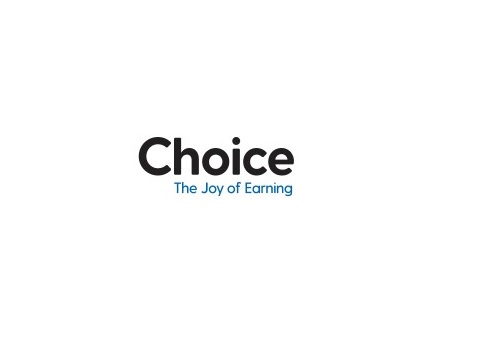Gold trading range for the day is 72115-73165 - Kedia Advisory

Gold
Gold prices edged higher by 0.22% yesterday, reaching 72683, buoyed by a weaker dollar following concerns expressed by finance chiefs in the US, Japan, and Korea regarding currency depreciation. Additionally, geopolitical tensions surrounding Israel's response to Iran's attack elevated safe-haven demand, despite hawkish signals from Fed officials that tempered the metal's allure. The recent surge in gold prices, particularly in China's local currency, has had a mixed impact on demand. While it dampened jewelry demand, Chinese investors continue to perceive high prices as favorable, as reported by Ray Jia, Head of Research for China at the World Gold Council (WGC). Sales of bars and coins remained robust, indicating sustained investor interest amid elevated prices. In quarterly terms, wholesale demand for gold remained robust, with 522 tonnes of gold withdrawals from the Shanghai Gold Exchange (SGE) during Q1, marking a 57-tonne increase year-over-year for the highest first quarter since 2019. From a technical standpoint, the gold market experienced short covering, with a 2.35% drop in open interest, settling at 21441, coupled with a significant increase of 160 rupees in prices. Key support levels are identified at 72400, with potential downside testing at 72115. Conversely, resistance is anticipated at 72925, with a breakthrough potentially leading to a test of 73165. Traders should monitor these levels closely amidst ongoing geopolitical developments and monetary policy signals for potential trading opportunities.
Trading Ideas:
* Gold trading range for the day is 72115-73165.
* Gold rose helped by a softer dollar
* Investors were also kept on edge in anticipation of Israel's response to Iran's attack.
* Hawkish pronouncements from Fed officials dampened the metal's luster.
Silver
Silver experienced a slight decline of -0.27% yesterday, closing at 83273, driven by profit booking after earlier gains amidst heightened geopolitical tensions in the Middle East. Concerns over a potential regional conflict, especially after Israel's vow to retaliate against Iran's attack, kept global markets on edge, enhancing silver's safe-haven appeal. Additionally, silver's industrial applications, particularly in electronics and solar power, continued to drive demand, outpacing supply growth. This growing deficit was evident in declining above-ground inventories held in LBMA and exchanges in recent years. Despite these supportive factors, strong US retail sales data and hawkish comments from Fed Chair Powell raised expectations of prolonged restrictive monetary policy, exerting downward pressure on silver prices. The global silver deficit is projected to increase by 17% in 2024 to 215.3 million troy ounces, driven by robust industrial consumption and a slight decrease in total supply, according to the Silver Institute. Technically, the market witnessed long liquidation, with a drop in open interest by -6.12%. Currently, silver finds support at 82900, with a potential test of 82530 below this level. Resistance is anticipated at 83820, with a possible upward movement towards 84370 upon breaching this level. Traders should closely monitor these levels, considering both geopolitical developments and monetary policy signals for potential trading opportunities. Overall, silver's performance reflects a delicate balance between geopolitical risks, industrial demand dynamics, and monetary policy expectations. Continued geopolitical tensions and robust industrial demand are likely to provide support, while monetary policy outlooks may introduce volatility into the market.
Trading Ideas:
* Silver trading range for the day is 82530-84370.
* Silver dropped on profit booking after prices gained amid looming geopolitical risks in the Middle East.
* Silver's growing industrial applications, primarily in electronics and solar power, have boosted the commodity.
* Strong U.S. retail sales data and Powell's hawkish comments raised the possibility of prolonged restrictive policy.
Crude oil
Crude oil experienced a marginal decline of -0.01% yesterday, settling at 6933, as concerns over geopolitical tensions waned and US oil inventories surged. The Energy Information Administration reported a significant increase in US crude stocks, rising by 2.7 million barrels to 460 million barrels, exceeding market expectations. Additionally, crude stocks at the Cushing, Oklahoma delivery hub saw a slight uptick. Despite a rise in refinery crude runs, utilization rates declined slightly. Furthermore, data from the API's Weekly Statistical Bulletin revealed a consecutive weekly increase in crude oil inventories, marking the largest weekly gains in four weeks. Fading prospects of US interest rate cuts and weaker economic data from China for March contributed to a dampened demand outlook. Moreover, the US announced plans to reimpose oil sanctions on Venezuela, while the European Union discussed potential sanctions on Iran following its attack on Israel over the weekend. Technically, the market witnessed long liquidation, with a significant drop in open interest by -68.87%. Currently, crude oil finds support at 6840, with a potential test of 6746 below this level. Resistance is expected at 7006, with a possible upward movement towards 7078 upon breaching this threshold. Traders should closely monitor inventory levels, geopolitical developments, and technical indicators for potential trading opportunities in the crude oil market.
Trading Ideas:
* Crudeoil trading range for the day is 6746-7078.
* Crude oil dropped due to dwindling concerns over geopolitical tensions
* Fading prospects of US interest rate cuts this year and weaker economic data from China for March also dampened the demand
* EIA data showed that US crude inventories increased by 2.735 million barrels to their highest levels since June
Natural gas
Natural gas surged by 2.87% yesterday, settling at 146.9, primarily driven by forecasts of cooler weather and increased demand for the upcoming week, alongside a rise in gas flow to liquefied natural gas (LNG) export plants, including Freeport LNG. This uptick comes amidst a backdrop of declining US gas production, down approximately 10% since the beginning of the year. Energy firms such as EQT and Chesapeake Energy scaled back drilling activities and delayed well completions in response to plummeting prices earlier in the year. Despite a monthly drop in gas output in the Lower 48 US states, hitting a preliminary three-month low of 95.8 billion cubic feet per day (bcfd) on Thursday, US utilities managed to inject 50 billion cubic feet (bcf) of gas into storage during the week ended April 12, 2024. While this fell short of market expectations of a 54 bcf increase, it still outpaced the previous year's injection of 61 bcf and the five-year average rise of 61 bcf for the same period. Technically, the natural gas market experienced short covering, with a significant 18.49% drop in open interest, settling at 49917, coupled with a notable increase of 4.1 rupees in prices. Key support levels are identified at 144.9, with potential downside testing at 142.8. Conversely, resistance is anticipated at 149.1, with a breakthrough potentially leading to a test of 151.2. Traders should monitor these levels closely amidst evolving demand forecasts and production dynamics for potential trading opportunities.
Trading Ideas:
* Naturalgas trading range for the day is 142.8-151.2.
* Natural gas gains on forecasts for cooler weather
* Support also seen amid an increase in the amount of gas flowing to LNG export plants
* US utilities added 50 billion cubic feet (bcf) of gas into storage
Copper
Copper surged by 1.02% yesterday, settling at 838.3, driven by a combination of supply concerns and signs of increasing demand. Chinese copper smelters reduced activity levels in response to pledges to curb output by up to 10% this year, reflecting the ongoing challenge of low copper ore supply. This reduction in smelting activity, coupled with disruptions in key mining regions like Zambia and Panama, has exacerbated the industry's overcapacity, driving smelting fees to multi-year lows. However, amidst these supply constraints, demand from China showed signs of improvement, with imports of unwrought copper surging by 16% in March. This increase in demand aligns with strong manufacturing PMIs and suggests a potential turnaround in factory activity following a period of prolonged pessimism. Furthermore, China's refined copper production in March rose by 7.9% year-on-year, indicating robust domestic demand. Looking ahead, Chilean President Gabriel Boric anticipates slow but steady growth in production at state-run miner Codelco, with copper prices expected to rise. From a technical standpoint, the market witnessed fresh buying, with a modest increase in open interest. Currently, copper finds support at 832.4, with a potential test of 826.3 below this level. Resistance is anticipated at 842.8, with a possible upward movement towards 847.1 upon surpassing this level.
Trading Ideas:
* Copper trading range for the day is 826.3-847.1.
* Copper surged as concerns of low supply were met with signs of traction in demand
* China's March refined copper output jumps 8% y/y
* Chile president says Codelco copper output to grow in 2024
Zinc
Zinc experienced a marginal decline of -0.14% yesterday, settling at 247.55, primarily driven by profit booking amidst concerns about demand from China. This hesitation was compounded by reiterated statements from US Federal Reserve officials, indicating that interest rates are expected to remain elevated for an extended period. However, despite these apprehensions, data revealed that China's refined zinc production saw an uptick, with a month-on-month increase of 4.57% in March. The country's factory activity also displayed robust expansion, reaching its fastest pace in over a year, aligning with similar positive signals from the US manufacturing sector and Germany's industrial output. The International Lead and Zinc Study Group (ILZSG) forecasted a slight growth in global zinc mine production and refined zinc output for 2024. China, India, Mongolia, Peru, and Russia are expected to lead the surge in production. Despite the increase in production, the global refined zinc market is projected to maintain a surplus of 367,000 tons, with demand anticipated to rise by 2.5% year on year, primarily driven by China's 1.2% growth. Technically, the zinc market witnessed long liquidation, evidenced by a 10.38% drop in open interest, settling at 2391, coupled with a decrease of -0.35 rupees in prices. Key support levels are identified at 244.8, with potential downside testing at 241.9. Conversely, resistance is anticipated at 250.6, with a breakthrough potentially leading to a test of 253.5. Traders should monitor these levels closely amidst shifting demand dynamics and global production trends for potential trading opportunities.
Trading Ideas:
* Zinc trading range for the day is 241.9-253.5.
* Zinc dropped on profit booking amid worries about demand from China.
* China's refined zinc production was 525,500 mt, an increase of 23,000 mt or 4.57% month-on-month.
* U.S. Federal Reserve officials reiterated interest rates are likely to stay higher for longer.
Aluminium
Aluminium prices surged by 1.04% yesterday, closing at 237.3, driven by a tightening cash-to-three-month discount at $1.23 a ton, a significant shift from a discount of $45.94 last Friday. This tightening discount was fueled by a decline in LME aluminium inventories, dropping to 513,850 tons, the lowest since December 2023, due to recent withdrawals in Taiwan, Malaysia, and South Korea. Notably, investors signaled the removal of nearly 90,000 tons of aluminium from warehouses in Gwangyang, South Korea, indicating a preference to store Russian material elsewhere. China's primary aluminium output in March increased by 7.4% year-on-year, reaching 3.59 million metric tons, driven by higher demand and rising metal prices, leading to increased industry profits. Additionally, China's imports of unwrought aluminium and products surged by 89.8% in March, totaling 380,000 metric tons, with first-quarter imports reaching 1.1 million tons, up 92.3% from the previous year. This data, inclusive of primary metal and unwrought, alloyed aluminium, signifies robust demand and potentially tighter global supply dynamics. From a technical standpoint, the aluminium market witnessed short covering, with a notable 14.68% drop in open interest, settling at 2324, alongside a price increase of 2.45 rupees. Key support levels are identified at 235.5, with potential downside testing at 233.7. Conversely, resistance is anticipated at 238.5, with a breakthrough potentially leading to a test of 239.7. Traders should closely monitor these levels amidst evolving supply dynamics and import trends for potential trading opportunities.
Trading Ideas:
* Aluminium trading range for the day is 233.7-239.7.
* Aluminium gains as falling LME aluminium stocks saw the cash-to-three-month discount at $1.23 a ton
* LME aluminium inventories fell to the lowest since December 2023, driven by recent withdrawals
* China's March aluminium imports jump 90% on – year
Cotton
Cotton candy prices experienced a marginal decline of -0.03% yesterday, settling at 57580, largely influenced by prospects of improved crop yields, particularly in countries like Australia. The International Cotton Advisory Committee (ICAC) projected a positive outlook for the 2024-25 cotton season, foreseeing increases in cotton-producing area, production, consumption, and trade. Notably, the ICAC anticipates a 3% expansion in the cotton-producing area, reaching 32.85 million hectares, with production expected to rise by over 2.5% to 25.22 million tonnes. Consumption and global cotton trade are also forecasted to increase by 2.9% and nearly 4%, respectively. In India, the Cotton Association of India (CAI) and the Cotton Corporation of India (CCI) revised upwards their production estimates for the current season, indicating a potential surplus. However, expectations of a 2% decrease in cotton acreage for the upcoming season due to farmers shifting to higher-return crops may mitigate some of this surplus. Internationally, India and China's cotton production and import dynamics are pivotal. India's estimated decrease in cotton production for MY 2024/25, coupled with higher mill consumption and imports, underscores shifting market dynamics. Similarly, China's forecasted increase in cotton imports for the same period reflects rising domestic and international demand for textile and apparel products. Technically, the cotton candy market witnessed fresh selling, with a modest gain in open interest by 0.98%, settling at 411, alongside a price decline of -20 rupees. Key support levels are identified at 57140, with potential downside testing at 56710, while resistance is anticipated at 58000, with a potential breakout leading to a test of 58430. Traders should closely monitor these levels amidst evolving supply-demand dynamics and global production trends for potential trading opportunities.
Trading Ideas:
* Cottoncandy trading range for the day is 56710-58430.
* Cotton prices dropped amid prospects of a better crop.
* The ICAC's projections for 2024-25 suggest that the cotton-producing area may increase by 3 per cent from the 2023-24 acreage
* For 2024/25 China’s cotton imports are forecast at 2.4 million metric tons
* In Rajkot, a major spot market, the price ended at 27912.6 Rupees dropped by -0.31 percent.
Turmeric
Turmeric prices surged by an impressive 6% yesterday, settling at 18346, propelled by below-normal supplies and active festive demand. However, this bullish momentum may face limitations as new arrivals are expected from the Marathwada region in Maharashtra, indicating a potential increase in supply. Reports indicate significant new crop arrivals in key markets like Nanded, Nizamabad, and Erode, suggesting a boost in supply compared to the previous week. Despite the increase in arrivals, turmeric production for 2023-24 is estimated to be lower than the previous year, with demand also affected by surging prices, leading to some demand destruction. However, regions like Sangli, Basmat, and Hingoli are experiencing good demand for quality turmeric due to expectations of an increase in sowing area. In terms of exports, turmeric shipments during April-January 2024 witnessed a slight decrease compared to the same period in the previous year. However, imports during the same period saw a significant decline, indicating a preference for domestic produce. From a technical standpoint, the market witnessed fresh buying, with open interest increasing by 0.31%. Currently, turmeric finds support at 17882, with a potential test of 17418 below this level. Resistance is expected at 18578, with a possible upward movement towards 18810 upon surpassing this level. Traders should closely monitor supply dynamics, export-import trends, and technical signals for potential trading opportunities in the turmeric market, considering both domestic and global factors influencing price movements.
Trading Ideas:
* Turmeric trading range for the day is 17418-18810.
* Turmeric gains amid below normal supplies and active festive demand.
* New crop supply has increased by over 25% in parts of Tamil Nadu, Telangana, and Andhra Pradesh
* The Ministry of Agriculture first advance estimate for turmeric production in 2023-24 is estimated at 10.74 lakh tonnes
* In Nizamabad, a major spot market, the price ended at 16721.55 Rupees gained by 2.44 percent.
Jeera
Jeera prices surged by 1.62% yesterday, closing at 22255, driven by global buyers' preference for Indian jeera amidst tightening global supplies. However, the upside potential was limited due to concerns regarding further pressure from increasing arrivals in the market, with 10000 to 12000 bags of jeera arriving daily in Rajkot Mandi. New arrivals in Gujarat and Rajasthan have contributed to the supply influx, surpassing current demand levels. The surge in production, fueled by increased sowing areas and favorable weather conditions, has significantly boosted cumin production in major producing regions of India. Gujarat is estimated to witness a record production of 4.08 lakh tonnes, while Rajasthan's production has also increased by 53%. This substantial increase in production is expected to lead to a surge in cumin exports, with analysts estimating exports to reach about 14-15 thousand tonnes in February 2024. Despite the optimistic outlook for exports, data reveals a decline in jeera exports during Apr-Jan 2024, dropping by 25.33% compared to the previous year. However, there was a slight increase in exports in January 2024 compared to December 2023, indicating some improvement. Technically, the jeera market witnessed short covering, with a 1.27% drop in open interest, settling at 2790, alongside a significant price increase of 355 rupees. Key support levels are identified at 21940, with potential downside testing at 21630, while resistance is anticipated at 22430, with a potential breakout leading to a test of 22610. Traders should closely monitor these levels amidst evolving supply dynamics and export trends for potential trading opportunities.
Trading Ideas:
* Jeera trading range for the day is 21630-22610.
* Jeera gains as global buyers preferred Indian jeera with tightening global supplies.
* There will be a huge increase in cumin exports, which will reach about 14-15 thousand tonnes in February 2024.
* New arrivals have started in Gujarat since last 20-25 days and new arrivals have started in Rajasthan also since last 15 days.
* In Unjha, a major spot market, the price ended at 23159.6 Rupees dropped by -0.31 percent.
Views express by all participants are for information & academic purpose only. Kindly read disclaimer before referring below views. Click Here For Disclaimer






















